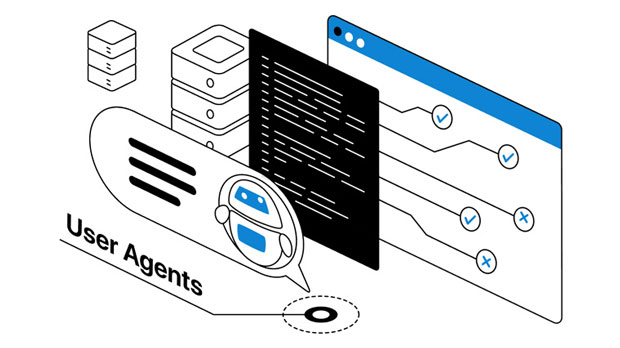Using a socks5 proxy with Google Chrome can significantly improve your online privacy, but it is important to understand its specific role and limitations. While a SOCKS5 proxy can mask your IP address, encrypt traffic, and provide an added layer of anonymity, it is not a complete solution for online privacy. This article will explore how socks5 proxies work, how they interact with Google Chrome, and how they contribute to privacy protection. We will also analyze the effectiveness of SOCKS5 proxies in the context of protecting sensitive data and offer practical recommendations for enhancing privacy while browsing. Understanding SOCKS5 Proxy and Google Chrome IntegrationBefore diving into the privacy benefits, it's essential to understand what a SOCKS5 proxy is and how it interacts with Google Chrome.1. What is a SOCKS5 Proxy? A SOCKS5 proxy is a type of proxy server that routes internet traffic between your device and the websites you visit, changing the apparent origin of the request. Unlike other proxies, SOCKS5 does not modify or inspect the content of the data being transmitted, making it a more flexible and less intrusive option. It works by forwarding traffic for various protocols, including HTTP, FTP, and others, which allows users to access a broader range of content.2. How Does SOCKS5 Work with Google Chrome? When configured in Google Chrome, the SOCKS5 proxy acts as an intermediary between your device and the internet. Any request made by Chrome, such as visiting a website, goes through the proxy server, which masks your IP address and makes it appear as though the request is coming from the server’s IP address. This helps in avoiding location-based tracking and prevents websites from easily identifying your real IP.Key Privacy Benefits of Using SOCKS5 Proxy with Google ChromeWhile a SOCKS5 proxy can certainly enhance your privacy while using Google Chrome, it's important to recognize that it is not a panacea for all privacy concerns. Below are the key benefits it provides:1. IP Address Masking The most obvious benefit of using a SOCKS5 proxy is its ability to hide your real IP address. Websites and online services can only see the IP address of the proxy server, rather than your actual IP address. This makes it more difficult for websites to track your browsing habits or associate your online activity with your personal identity. This is especially beneficial for users who are concerned about being tracked by advertisers, websites, or even governmental agencies.2. Bypassing Geo-Restrictions Many websites restrict access based on geographical location. By using a SOCKS5 proxy, users can appear to be browsing from a different location, thus bypassing these geo-restrictions. This can be especially useful for accessing content that may be unavailable in certain regions, such as streaming services or specific websites.3. Encryption of Traffic (to some extent) While SOCKS5 itself does not provide encryption by default, it can be used in conjunction with other tools, like a VPN, to encrypt traffic. In some instances, SOCKS5 proxies can provide basic security by routing traffic through a secure server. However, it is important to note that the level of encryption is typically not as strong as that offered by other privacy-focused technologies, such as VPNs or HTTPS connections.4. Avoiding Tracking from ISPs and Websites SOCKS5 proxies can help avoid the tracking done by your Internet Service Provider (ISP). Since your requests are routed through the proxy server, your ISP cannot directly see what websites you are visiting. Additionally, some websites use cookies and trackers to monitor user behavior. While SOCKS5 proxies do not block these trackers directly, they can obscure the real IP address associated with the data, making it harder for websites to link the data to a specific user.Limitations of SOCKS5 Proxy in Protecting PrivacyWhile SOCKS5 proxies offer several privacy benefits, they are not a foolproof solution. Below are the primary limitations of using SOCKS5 proxies for privacy protection.1. No Full Encryption SOCKS5 proxies themselves do not provide end-to-end encryption of the traffic passing through them. Without encryption, data can still be intercepted, especially on unsecured networks like public Wi-Fi. If your goal is to ensure that all your traffic is encrypted, a VPN or HTTPS connection may be a better option.2. No Built-in Anonymity Features SOCKS5 proxies focus primarily on IP masking, but they do not offer additional features like anonymity or data obfuscation. While they prevent websites from seeing your real IP, they do not hide other personal information or behavior patterns. Websites may still track you using cookies, browser fingerprints, or other advanced tracking techniques.3. Vulnerable to DNS Leaks A potential problem with SOCKS5 proxies is the risk of DNS leaks. This happens when DNS queries are sent outside the proxy tunnel, exposing your browsing activity to your ISP or other third parties. This can undermine the privacy protection that SOCKS5 proxies provide. To mitigate this, users should ensure they are using DNS servers that respect their privacy and configure their devices to prevent DNS leaks.4. Limited Protection Against Malicious Entities While SOCKS5 proxies obscure your IP address, they do not prevent you from being tracked by malicious actors who are able to use other techniques to identify you. For example, websites can still track your browsing behavior through cookies, browser fingerprinting, and other methods. If a website is sophisticated enough, it may be able to correlate your activity even if your IP address is hidden.Complementing SOCKS5 Proxy with Other Privacy ToolsTo maximize privacy protection while using Google Chrome, it is advisable to use SOCKS5 proxies in conjunction with other privacy-enhancing tools.1. Using HTTPS Connections Always use HTTPS websites when browsing. HTTPS ensures that the data between your browser and the website is encrypted, even if you are using a SOCKS5 proxy. This is essential for preventing man-in-the-middle attacks and ensuring that sensitive data (such as passwords and credit card information) remains secure.2. Using a VPN in Addition to SOCKS5 A Virtual Private Network (VPN) adds an extra layer of privacy by encrypting all your internet traffic, making it much more difficult for anyone to intercept or track your activity. By combining a VPN with a SOCKS5 proxy, you can ensure that your data is both encrypted and anonymized, significantly improving your overall online privacy.3. Browser Privacy Settings Google Chrome and other browsers offer various privacy settings that can help reduce tracking. These include blocking third-party cookies, disabling location tracking, and using private browsing mode. Combining these settings with a SOCKS5 proxy can further enhance your privacy.ConclusionUsing a SOCKS5 proxy with Google Chrome can be a valuable tool for improving online privacy, particularly in terms of hiding your IP address and bypassing geographic restrictions. However, it is important to recognize that SOCKS5 proxies do not provide full encryption or anonymity, and they are not sufficient on their own to ensure complete privacy protection. To maximize your privacy, it is recommended to use SOCKS5 proxies in combination with other privacy-enhancing tools, such as HTTPS connections, VPNs, and privacy-focused browser settings. By understanding the limitations and benefits of SOCKS5 proxies, you can make more informed decisions about how to protect your online identity while using Google Chrome.
Jan 09, 2025






















































